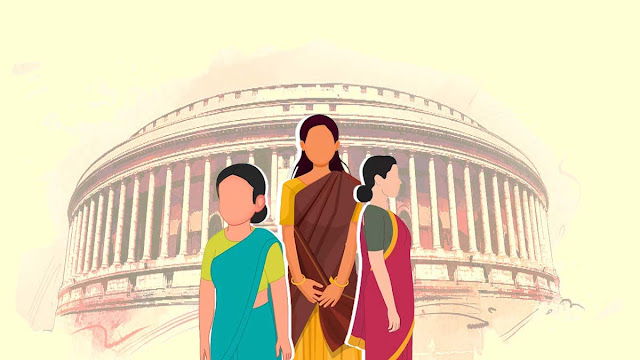Sachar Committee report 2006 revealed various disparities and challenges faced by Indian muslims. These included lower levels of educational attainment, higher rates of poverty, unemployment, and inadequate representation in government jobs, limited political representation, discrimination in housing, less access to loans and other economic opportunities.
The 403 pages report
“Social Economic and Educational Status of Muslim Community in India – A
Report’’ was presented in the Lok Shaba in November 2006, and subsequently
several recommendations were considered over years, but all the government
indicators still show no significant change in the condition of muslim
community in India.
The statistics show that Indian muslims employment is less than 5% in government jobs, 3.2% in security forces, about 3% in corporate India. Muslims own appx 8% of India’s wealth, avg wealth of a muslim household is Rs 9.95 lac as against the Hindu upper caste household wealth of Rs 27.73 lac, OBC household wealth of Rs 12.96 lac, SC & ST household wealth of Rs 6.13 lac. Muslim higher education is 17%, as against national average at 26%. Only 50% of the muslim children complete middle school as against the national average of 62%, over 46% of muslims are self-employed in urban India, which is highest compared to other communities. (data from Rajya Sabha discussion 2023)
Indian muslims have been vilified by the political entity in power that is propagating hardline hindutva ideology over the last 10-15 years and damaging the inclusive nature of Indian society. Despite all the socio-economic-political challenges something is changing for good, the Indian muslims are marching ahead creating their own success stories and building lives.
In a recent interaction
with youths from different communities, Santosh Lad Labour Minister GoK shared
a very thought-provoking argument on Skill Development. He spoke eloquently
about how the Indian muslims despite the challenges are constantly acquiring
skills in every industry, sector, and trade that we know of today. He further
pointed out that from puncture shops to IT companies, fixing tiles to mobile phones,
plumbing to real estate, tea shops to teaching, butcher shops to malls,
electric shop to new age entrepreneurs, hotels to hospitals, drivers to deans,
cleaners to doctors the Indian Muslims are working in every space, challenging
status-quo, and silently but strongly contributing to the growth of the nation.
He also shared the view that unless young people across all religion, regions,
and castes are not prepared to explore opportunities, challenge norms, and grow
economically the social disparities will continue to weigh on them forever.
The sustained unspoken discrimination in the private sector post 9/11 and lack of adequate representation in government jobs have forced young Indian muslims to relentlessly hone skills that can get them jobs, start business, and create wealth. India in 2023 received over $ 125 billion remittances from across the globe, a major part of these remittances comes from Indian muslims working overseas mostly middle-east Asia, who are consistently sending wealth back home.
In the last three decades education has become a powerful tool for young muslim women to be more progressive, vocal, and are consciously charting their way into the workforce. Education is also promoting many social changes and improved lifestyle and bettered the living conditions. The rise of the middle class in the Indian muslim community is encouraging, they are aspirational, educated, progressive is constantly breaking free from the shackles of socio-economic clutches just like the middle class in Indian hindus community.
Speaking proudly of the success story of Mustafa the CEO of ‘iD Fresh Food’ a young muslim girl student corrected me and said “Akka (elder sister) we not only cook the best biriyani; we make the ready batter for the best idly and dose too.”
Indian muslims for long have carried the burden of partition, riots, haunted by the ghosts of babri masjid demolition and scared by Gujarat mass murders, many have let gone the past for a better future. The current generation of young Indian muslims do not relate to history gone by, and do not seem to be too keen to visit the past. During the anti-CAA protests the emergence of assertive Indian muslims holding the constitution book and fighting for their rights gave a new direction and purpose, and the purpose became stronger and important for the future.
Even as we continue to debate on the finding of Sachar Committee, and the important need to do lot more to uplift the Indian muslim community, the young Indian muslims are striding ahead not waiting for policies to change their destiny. Representation in the government, administration is a necessity to create a level playing field, and to eventually end misplaced islamophobia and ghettoization in the nation that is home to the world’s third largest muslim population.
In caste ridden Indian hindu society where the oppressed castes are still struggling with socio-economic inequality, women are also fighting social obstacles and lack of proportionate opportunities in every sector, and the story of resilient Indian muslims holding ground despite social hurdles and hostile political environment is indeed a powerful message.
Progress of every society
depends on how the young people reskill, rethink, and renegotiate their paths,
and how they re-write their success stories, at the age of 18 if one can vote
out a government, they sure are capable of changing destiny of the nation too.
Kavitha Reddy
KPCC General Secretary (views are personal) www.KavithaReddy.in






